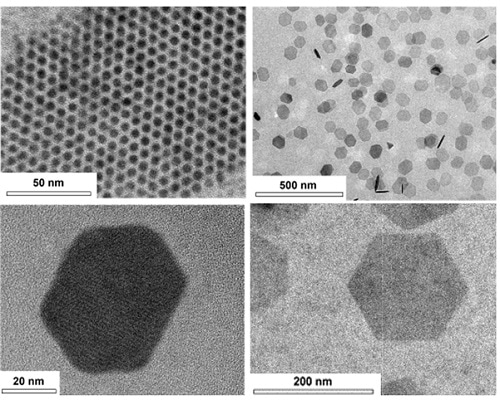Aug 5 2019
A group of researchers from KAIST has developed a new approach for producing single-crystalline graphene quantum dots, which release stable blue light.
 Uniformly ordered single-crystalline graphene quantum dots of various sizes synthesized through solution chemistry. (Image credit: KAIST)
Uniformly ordered single-crystalline graphene quantum dots of various sizes synthesized through solution chemistry. (Image credit: KAIST)
The scientists verified that a display built using their synthesized graphene quantum dots effectively released blue light with stable electric pressure, apparently resolving the persistent problems faced in achieving blue light emission in manufactured displays.
The research, headed by Professor O Ok Park from the Department of Chemical and Biological Engineering, appeared online in Nano Letters on July 5th, 2019.
Graphene has won increased interest as a next-generation material for its electrical and heat conductivity and also its transparency. However, single- and multi-layered graphene have characteristics of a conductor hence it is not easy to be applied into a semiconductor.
The semiconductor’s unique characteristic of bandgap will be shown to release the light in the graphene only upon being downsized to the nanoscale. This illuminating featuring of dot is known as a graphene quantum dot.
Traditionally, single-crystalline graphene has been produced by chemical vapor deposition (CVD) on nickel or copper thin films, or by peeling graphite chemically and physically. However, graphene produced through chemical vapor deposition is principally employed for large-surface transparent electrodes. However, graphene fabricated by chemical and physical peeling has irregular size defects.
The group of scientists described that their graphene quantum dots showed a highly stable single-phase reaction when they combined amine and acetic acid with an aqueous solution of glucose. After that, they produced single-crystalline graphene quantum dots through the self-assembly of the reaction intermediate.
During fabrication, the group created a new separation technique at a low-temperature precipitation, which resulted in the successful production of homogeneous nucleation of graphene quantum dots through a single-phase reaction.
Professor Park and his teammates have created solution-phase synthesis technology that enables the construction of the desired crystal size for single nanocrystals down to 100 nm. It is supposedly the first production of the homogeneous nucleation of graphene through a single-phase reaction.
This solution method will significantly contribute to the grafting of graphene in various fields. The application of this new graphene will expand the scope of its applications such as for flexible displays and varistors.
Professor O Ok Park, Department of Chemical and Biological Engineering, KAIST
This study was a joint project with a group from Korea University under Professor Sang Hyuk Im at the Department of Chemical and Biological Engineering, and was supported by the National Research Foundation of Korea, the Nano-Material Technology Development Program from the Electronics and Telecommunications Research Institute (ETRI), KAIST EEWS, and the BK21+ project from the Korean government.